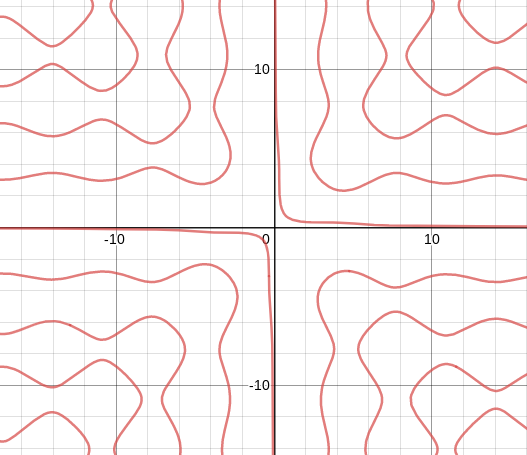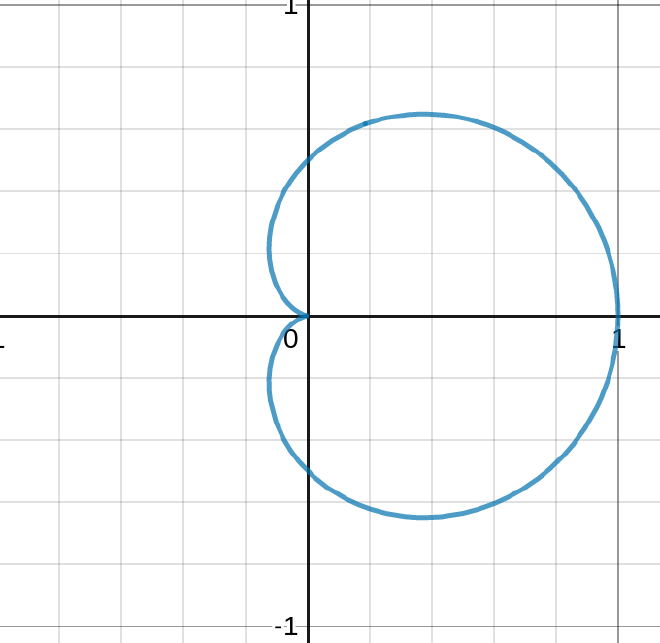Section 2.6
Table of Contents
Implicit Differentiation
Implicit curves #
Some curves are defined implicitly as equations. They’re not necessarily functions, but we can still do calculus.1
Example: #
The equation $x^2 + y^2 = 4$ defines a curve - a circle!
It consists of two implicit functions $y = \sqrt{4-x^2}$ and $y = - \sqrt{4-x^2}$, the upper and lower arcs of the circle, respectively.
Implicit differentiate #
- Our process is to take the derivative of both sides of the equation with respect to $x$.
- When you differentiate a $y$, we use the chain rule and multiply by $\frac{dy}{dx}$.
Example #
Differentiate $x^2 + y^2 = 4$ implicitly and solve for $\frac{dy}{dx}$, then find the points where $x^2 + y^2 = 4$ where the tangent line is horizontal and where the tangent line is vertical.
Example #
Find $\dfrac{dy}{dx}$ implicitly if $x\sin y + y\sin x = 1$
This is a really neat wobbly curve:

Here I’m using Geogebra to model the tangent line to the curve at any arbitrary point. Pretend that the curve models the shoreline; the tangent line would tell our GPS exactly how to hug the shore without crashing.
Check out this geogebra activity to play with it: (click this link)
https://www.geogebra.org/calculator/nzuk449p
The second derivative #
In order to find the second derivative with respect to $x$, we first need to solve for $\dfrac{dy}{dx}$ and differentiate that quantity.
The notation should help you remember this: $$ \dfrac{d^2y}{dx^2} = \dfrac{d}{dx}\frac{dy}{dx} $$
Example: #
Find $y’’$ of the curve $x^3 + y^3 = 1$
Example #
Find the equation of the of the tangent line at the point $(0, 1/2)$ of the curve $$ x^2 + y^2 = (2x^2 + 2y^2 - x)^2 $$
